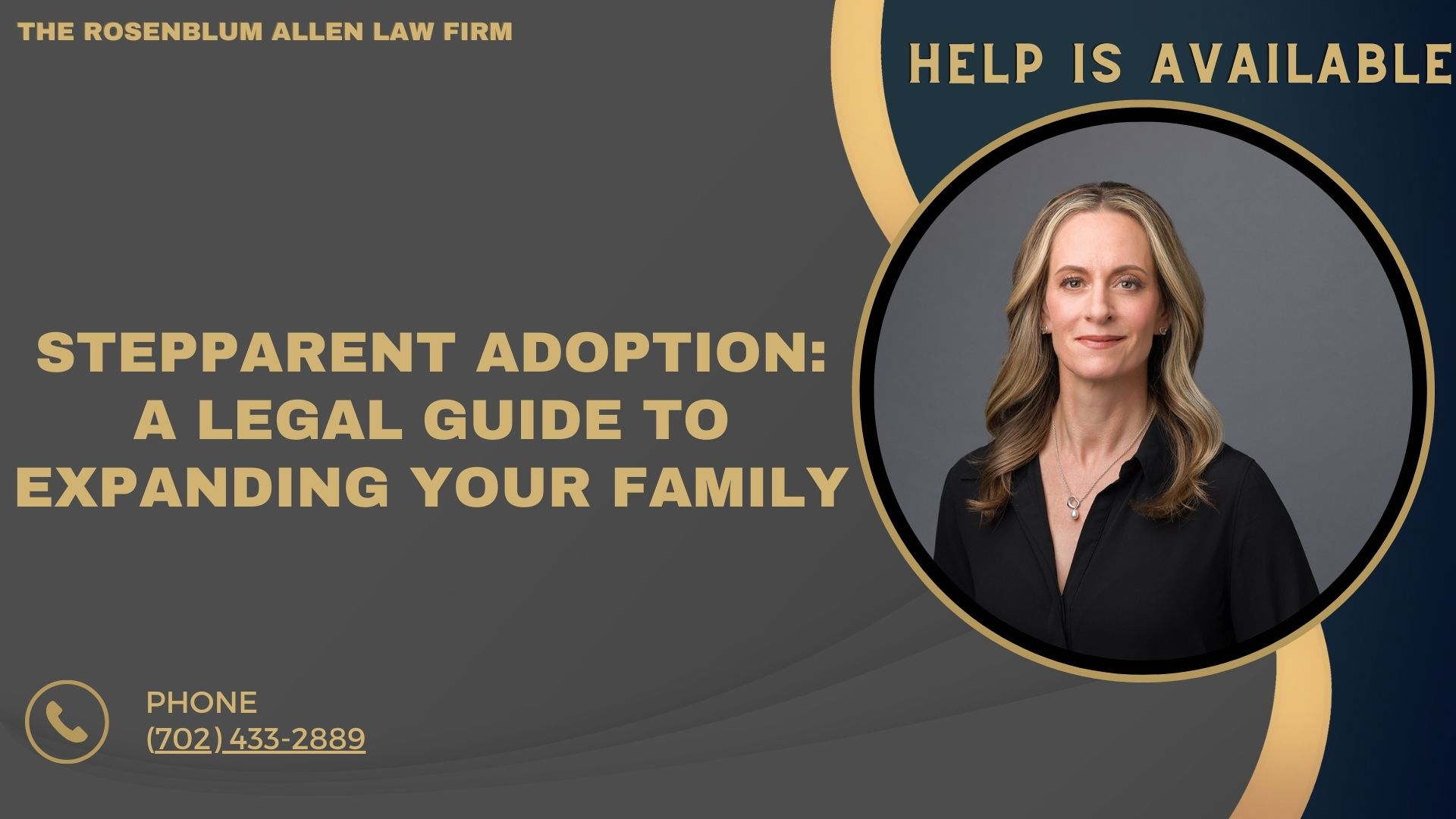Stepparent adoption is a significant legal process that helps solidify family relationships, ensuring that a stepparent is legally recognized as the parent of their spouse’s child. This process can be a powerful way to strengthen family bonds, offering emotional and legal benefits. However, it’s essential to understand the legal requirements and steps involved to ensure a smooth transition. This comprehensive guide will explore everything you need to know about stepparent adoption.
What is Stepparent Adoption?
Definition and Explanation of Stepparent Adoption
Stepparent adoption is the legal process by which a stepparent becomes the legal parent of their spouse’s child. In most cases, a stepparent adoption occurs when a married couple has children from a previous relationship, and one of the partners wishes to adopt the other’s child. This gives the stepparent all the legal rights and responsibilities of a biological parent, such as the right to make medical and educational decisions, and it also provides the child with inheritance rights.
The Difference Between Stepparent Adoption and Other Types of Adoption
Unlike other types of adoption, such as agency or private adoption, stepparent adoption generally involves a less complicated process. In traditional adoption, the child is typically adopted by non-relatives, and the legal process can involve placement, background checks, and home studies. With stepparent adoption, the primary focus is on the legal recognition of the stepparent as a parent. A stepparent adoption generally only involves the stepparent, biological parents, and the child.
Common Misconceptions About Stepparent Adoption
There are several misconceptions about stepparent adoption that may confuse. Here are some common ones:
- It’s only for married couples: While stepparent adoption is most common in married couples, unmarried partners can adopt their significant other’s child, provided they meet the legal requirements.
- The biological parent has to be absent or relinquish parental rights: In many cases, the biological parent must consent to the adoption, but they do not necessarily have to be absent or relinquish their rights entirely.
- The process is always long and complex: Stepparent adoption is often quicker and more straightforward than other types of adoption, but it requires careful attention to legal details.
Eligibility Requirements for Stepparent Adoption
Age and Residency Requirements
To adopt a child as a stepparent, the adopting individual (the stepparent) must typically be at least 18 years old. Additionally, the stepparent must usually reside in the same household as the child, and in some cases, they must meet specific state residency requirements before filing for adoption.
Marital Status of the Stepparent
The stepparent must be legally married to the child’s biological parent. An unmarried partner cannot proceed with a stepparent adoption, even if they’ve been together for years. The legal marriage between the stepparent and biological parent is a key factor in allowing the adoption to proceed.
Consent from the Biological Parent
One of the most crucial requirements for stepparent adoption is obtaining consent from the biological parent (the one who shares legal and physical custody of the child). The biological parent must agree to allow their spouse to adopt their child. In some cases, the biological parent may not consent, particularly in situations involving custody disputes or estranged relationships. If the biological parent is unwilling to approve, the stepparent adoption process can become more complicated.
Other Legal Considerations
- Termination of Parental Rights: In some instances, the biological parent’s parental rights must be terminated voluntarily or by court order. This is more common in situations where the biological parent has been absent, abusive, or unfit to care for the child.
- Criminal Background Checks: Stepparents may undergo criminal background checks as part of the adoption process, though these are generally less extensive than those required for other types of adoption.

The Stepparent Adoption Process
Step-by-Step Overview of the Adoption Process
Filing a Petition for Adoption
The first step in the stepparent adoption process is to file a petition for adoption with the local court. This petition typically includes information about the stepparent, the biological parent, and the child. Some courts may also require a written agreement from the biological parent(s) consenting to the adoption.
Home Study Process (If Applicable)
A home study may be required in some states before the adoption can proceed. This is a process in which a social worker or adoption agency evaluates the household to ensure a safe and stable environment for the child. However, home studies are not always necessary for stepparent adoptions, especially if the stepparent and biological parent have been married for a specific time and have already lived together.
Court Hearings and Requirements
Once the petition has been filed, the court will schedule a hearing. At the hearing, the judge will review the petition and ensure all legal requirements are met, including obtaining consent from the biological parent. Sometimes, the child may need to be present in court, and their opinion may be heard, depending on their age and maturity.
Finalizing the Adoption
If the court approves the adoption, a final judgment of adoption will be issued, officially recognizing the stepparent as the child’s legal parent. The child’s birth certificate will be updated to reflect the stepparent as the parent, and the stepparent will now have full legal rights and responsibilities toward the child.
How Long the Process Typically Takes
The duration of a stepparent adoption can vary depending on the state, but it typically takes a few months to a year. Factors such as the need for a home study, court backlogs, and complications with biological parent consent can influence the timeline.
Legal Costs Associated with Stepparent Adoption
While stepparent adoption is generally less expensive than other types of adoption, legal fees and court costs are still involved. The costs can vary based on the case’s complexity, whether legal assistance is required, and the state where the adoption occurs. Typically, stepparent adoption costs range from $500 to $2,000.
Benefits of Stepparent Adoption
Stepparent adoption can bring many benefits for both the child and the stepparent. It’s not just about the legal aspects—building stronger family connections and ensuring the child’s future security. Let’s look at the key benefits.
Legal Recognition of the Stepparent-Child Relationship
One of the most important reasons to consider stepparent adoption is the legal recognition it provides. Once the adoption is finalized, the stepparent gains all the legal rights and responsibilities of a biological parent, including the right to make decisions about the child’s health, education, and welfare.
Additionally, the child has two legal parents, even if one biological parent is absent or uninvolved. Knowing that both of their parents are committed to them can offer emotional security for the child.
Legal Rights and Responsibilities of the Stepparent
Once adopted, the stepparent gains the same legal rights as any biological parent. These rights include:
- Medical Decisions: The stepparent has the authority to make medical decisions on behalf of the child.
- Educational Decisions: The stepparent can decide about the child’s schooling.
- Parental Rights in the Event of Divorce: If the marriage ends in divorce, the stepparent may have rights regarding custody and visitation.
However, these rights come with responsibilities. Like any biological parent, the stepparent is legally obligated to care for the child and provide financial support.
Inheritance Rights
Stepparent adoption also ensures that the child has inheritance rights to the stepparent’s estate. This is particularly important if the stepparent plans to leave assets to the child in their will. Without adoption, the child may not automatically inherit from the stepparent.
Emotional and Psychological Benefits for the Child
For many children, the stepparent adoption process can be emotionally validating. When a child is adopted by their stepparent, it can help them feel more secure and connected. It can also strengthen the bond between the child and the stepparent.
The adoption gives the child a sense of belonging and identity, knowing that both parents are legally and emotionally invested in their well-being. The stability of a fully integrated family can reduce confusion or uncertainty, especially if the child was previously dealing with a non-custodial parent or complex family dynamics.
Strengthening Family Bonds
Adopting a stepchild can make family connections feel more real and permanent. It provides a sense of unity and helps blend families in a complete way. The child now has the legal parentage of both parents, which can encourage deeper connections between family members.

Challenges and Considerations in Stepparent Adoption
While stepparent adoption can be an incredibly positive experience, there are also challenges and considerations to remember. You should think about these carefully before proceeding.
Potential Issues with Biological Parent Consent
One of the biggest hurdles in stepparent adoption is obtaining consent from the biological parent. In most cases, the biological parent must agree to the adoption to proceed. But what happens if the biological parent is absent, uncooperative, or unwilling to consent?
When Biological Parent Consent Isn’t Needed
In some situations, consent from the biological parent is not required. This typically occurs when:
- The court has terminated the biological parent’s parental rights due to abuse, neglect, or abandonment.
- The biological parent has been absent or has not had contact with the child for a significant period (usually at least one year).
- The biological parent is unable to provide consent due to mental incapacity or other reasons recognized by the court.
If the biological parent is unwilling to consent but does not meet the conditions for involuntary termination of rights, the process may become more complicated and require court intervention.
Navigating Disagreements Between Biological Parents
In some cases, the biological parent may object to the adoption, which can lead to a prolonged legal battle. If this happens, the court may consider whether the stepparent’s adoption is in the child’s best interest, which is the primary concern in any family law case.
A family lawyer can help guide you through these challenging situations, ensuring that the child’s welfare remains at the forefront of the case.
Emotional Challenges for the Child and Stepparent
Adoption can be an emotional process for both the child and the stepparent. It may stir up mixed feelings for the child, especially if the biological parent is still involved in their life. Some children might feel loyalty conflicts, while others may feel relief or happiness from the new family structure.
Stepparents may also experience emotional challenges transitioning from being a “parental figure” to a fully recognized legal parent. The added responsibility can bring stress, but the emotional reward can be just as powerful.
The Potential Impact on Visitation Rights and Child Custody Arrangements
Stepparent adoption can affect existing visitation or custody arrangements with the child’s biological parents. If the biological parent who is not involved in the adoption still has legal custody or visitation rights, the adoption could lead to changes in these arrangements.
In some cases, the biological parent may petition the court to modify custody orders, especially if they feel that the adoption could reduce their contact with the child. It’s essential to consult a family lawyer to understand how this may impact the current legal situation.
Handling Family Dynamics and Reactions
The adoption process can trigger strong emotional reactions from family members—both positive and negative. Extended family members may feel uncomfortable or resistant to the change, especially if they have been close to the biological parent. Communication and patience are key when navigating these dynamics.
It’s also important to consider how the adoption will affect the child’s relationship with their biological family members. In some cases, it may create tension or lead to feelings of displacement.

What Happens After Stepparent Adoption?
Once the adoption is finalized, the legal and emotional aspects of the family dynamic can shift significantly. Here’s what to expect in the aftermath of a stepparent adoption.
Legal Changes After Adoption
After the adoption, the child’s birth certificate will be amended to reflect the stepparent as their legal parent. This means the stepparent now has the same rights as a biological parent, including the right to make decisions about the child’s life.
The child may also gain inheritance rights from the stepparent, meaning they are legally entitled to inherit from the estate.
How Adoption Affects Custody, Visitation, and Child Support
For the stepparent, adoption can impact custody and visitation rights, especially if the biological parent and stepparent divorce later. Depending on the state and specific circumstances, the stepparent may also become responsible for child support.
It’s essential to understand that adoption may have long-term effects on family law matters. A family lawyer can help you navigate any potential custody, visitation, or support changes post-adoption.
New Responsibilities and Rights for the Stepparent
Once the adoption is finalized, the stepparent assumes full parental rights and responsibilities. This includes:
- Providing financial support for the child
- Being involved in decisions about the child’s upbringing, education, and health
- Having the legal right to make decisions in emergencies or regarding the child’s care
Maintaining Relationships with Biological Family Members
Even after adoption, it’s possible to maintain relationships with the biological family members if it’s in the best interest of the child. Many families choose to keep communication open with the biological parent, especially if that parent remains involved in the child’s life.
However, the legal relationship between the child and the biological parent may shift, as the child now has the stepparent legally recognized as their parent.
Common Myths About Stepparent Adoption
Adoption is often surrounded by misconceptions that can make the process feel overwhelming. These myths can confuse families considering stepparent adoption. Let’s take a moment to debunk some of the most common myths.
The Stepparent Doesn’t Have to Adopt to Be a Parent
Many people believe that a stepparent doesn’t need to go through the formal adoption process to be considered a parent. While it’s true that stepparents often take on parental roles in the family, legally, they don’t have the same rights as biological parents unless they complete the adoption process.
Without adoption, a stepparent doesn’t automatically gain parental authority over the child. They won’t have the right to make significant decisions for the child, nor will they be granted visitation or custody rights in the event of divorce. Adoption legally solidifies the stepparent’s parent role, ensuring that emotional and legal bonds are recognized.
Adoption is Always a Complicated and Lengthy Process
Another common myth is that stepparent adoption is always lengthy, expensive, and complex. While it’s true that some adoptions can be complicated, stepparent adoption is typically much more streamlined than other types of adoption.
In most cases, the process is quicker because it doesn’t require the same scrutiny as other types of adoption. The stepparent is already involved in the child’s life, and there is no need for placement or waiting periods. If the biological parent agrees to the adoption and the stepparent meets the requirements, it can often be completed in months.
The Child Must Be Old Enough to Consent
Some people believe that stepparent adoption requires the child to be old enough to provide consent. While the child’s feelings are taken into account, they do not need to actively consent to the adoption, mainly if they are under a certain age.
However, if the child is older, typically around 12 or older, the court may hear their opinion. The judge will assess the child’s maturity and feelings toward the adoption, though their consent is not always a requirement. The main focus will always be on the child’s best interest.
Stepparent Adoption Will Automatically Terminate the Biological Parent’s Rights
A common myth is that adopting a child as a stepparent automatically ends the biological parent’s rights. While stepparent adoption can sometimes result in the termination of the biological parent’s rights, this is not always the case.
In most instances, the biological parent’s rights must be voluntarily terminated through consent or due to the parent’s absence or incapacity. If the biological parent is still involved in the child’s life and has legal rights, their consent is required for adoption. The process doesn’t automatically sever their rights unless there’s a court order or specific legal grounds for termination.

When to Seek Legal Help for Stepparent Adoption
Stepparent adoption can be a smooth process, but it can also be tricky. In some situations, it’s a good idea to seek the help of an experienced family lawyer. Here’s when you should consider seeking legal assistance.
Importance of Consulting an Attorney
Adopting a child as a stepparent is a legal process that requires knowledge of family law and the specific requirements in your state. Consulting a lawyer ensures that you follow the correct procedures and avoid making mistakes that could delay or complicate the process. A family law attorney can:
- Guide you through the paperwork
- Help you understand the legal requirements
- Represent your interests in court
- Assist with any disputes or complications that may arise
How a Family Law Attorney Can Help Guide the Process
The adoption process can be confusing, especially if it involves complicated family dynamics. A family law attorney can clarify the steps and prepare you for each stage. They will also help ensure that all necessary documents are filed correctly and that any deadlines are met.
If the biological parent is not cooperating or there are issues with custody arrangements, an attorney will advocate on your behalf. They will work to ensure that the child’s best interests remain the central focus throughout the process.
Signs That You May Need Legal Assistance
You should consider seeking legal help if:
- The biological parent is uncooperative or refuses to consent to the adoption
- There is a complicated custody arrangement or ongoing custody dispute
- You are unsure about the legal requirements in your state
- You encounter roadblocks or delays in the adoption process
- The adoption involves a child of significant age (12 years or older), and the court may want to hear their opinion
- You need help understanding how adoption affects visitation, custody, or child support issues
Having legal support ensures that you don’t overlook essential aspects of the adoption, which can lead to delays or complications later.
The Role of an Attorney in Handling Complex Adoption Cases
In some cases, stepparent adoption may involve more complex legal issues, such as termination of parental rights or contentious disagreements between biological parents. In such cases, an experienced attorney becomes essential. They can:
- File motions to terminate parental rights
- Represent you in contested hearings or court proceedings
- Offer advice on how to handle complex family dynamics
- Assist in negotiating custody and visitation arrangements
An attorney can also help with any potential objections from extended family members, guiding you through the legal process with minimal disruption.

Breaking It All Down
Stepparent adoption is a powerful way to strengthen family ties and provide legal recognition for the parent-child relationship. Whether you are looking to solidify your role as a parent or ensure that your child inherits from you, the benefits are clear. However, it’s essential to understand the process, the eligibility requirements, and potential challenges.
The adoption journey can be rewarding, but it’s not without complexities. By being well-informed and knowing when to seek legal advice, you can make the process as smooth as possible. If you’re considering stepparent adoption, consulting with a family lawyer to guide you through the process and address any unique concerns is a good idea.
We hope this guide has answered your questions and helped you understand the ins and outs of stepparent adoption. If you’re ready to move forward with the process, don’t hesitate to contact a legal professional who can support you every step.

Frequently Asked Questions
Can a stepparent adopt a child without the biological parent's consent?
In most cases, the biological parent’s consent is required for the adoption to proceed. However, if the biological parent’s rights have been terminated due to abandonment, neglect, or incapacity, the stepparent may be able to adopt the child without their consent. This can be a complex legal issue, so consulting an attorney is recommended.
What is the age requirement for a child to be adopted by a stepparent?
There is no specific age requirement for a child to be adopted by a stepparent as long as the child’s biological parent agrees or their rights are terminated. However, the older the child, the more likely the court will want to hear their opinion on the adoption, mainly if the child is around 12 years old or older.
Will the stepparent be financially responsible for the child after adoption?
After adoption, the stepparent assumes full parental responsibilities, including financial support. This means the stepparent may be required to provide for the child’s needs, such as food, clothing, and education, just like a biological parent. The stepparent is also responsible for paying child support if the family structure changes, such as during a divorce.
Can a stepparent adopt a child if they've been in the child's life for only a short time?
It is possible for a stepparent to adopt a child after being in the child’s life for a short time, but this depends on the situation. The court will generally look at factors such as the stepparent’s relationship with the child, the biological parent’s involvement, and whether the adoption is in the child’s best interest. If the biological parent consents and there is a strong bond between the stepparent and child, the process may proceed more smoothly.
How does stepparent adoption affect custody arrangements?
Stepparent adoption can impact existing custody arrangements, particularly if the biological parent who is not involved in the adoption still holds legal rights to custody or visitation. The court may review custody and visitation schedules after the adoption, which could result in changes. Adoption could potentially alter the child’s legal relationship with the biological parent, depending on the circumstances.
Can a child have more than two legal parents after a stepparent adoption?
In most cases, a child can only have two legal parents. If a stepparent adopts the child, the biological parent’s rights may be terminated, meaning the child would then have two legal parents—the biological parent and the stepparent. The court may allow for multiple legal parents in some rare instances, but this is generally uncommon and depends on state laws and specific circumstances.
Is a home study required for stepparent adoption?
In most cases, a home study is not required for stepparent adoption. A home study is typically part of the adoption process for non-relative adoptions, where a social worker assesses the home environment. Since the stepparent is already part of the household and involved in the child’s life, the court may waive this requirement. However, specific states or situations may require a home study to ensure the child’s well-being.
Can a stepparent adoption be reversed?
Once a stepparent adoption is finalized, it is generally permanent and cannot be reversed unless there is a serious issue, such as fraud or misrepresentation. In some cases, if the biological parent who was not involved in the adoption seeks to regain parental rights, the court may review the situation. Still, such cases are rare and difficult to navigate.
Can a stepparent adopt a child if the biological parent is still actively involved?
Yes, a stepparent can adopt a child even if the biological parent is still actively involved, but the biological parent must consent to the adoption. Suppose the biological parent does not consent or is unwilling to relinquish their parental rights. In that case, the adoption may not proceed unless the court determines it is in the child’s best interest.
What happens if the stepparent adopts the child but later wants to contact the biological parent?
After adoption, the child’s legal relationship with the biological parent may change, but emotional connections can remain. If the child wants to contact their biological parent after adoption, it may be possible to facilitate this, depending on the situation. However, the biological parent may no longer have legal rights to make decisions about the child’s life or be involved in their upbringing after the adoption is finalized.
Can an adopted child inherit from their biological parent after the adoption?
In most cases, once the stepparent adoption is finalized, the child’s legal relationship with the biological parent is severed, including inheritance rights. However, if the biological parent left assets to the child in a will before adoption, those inheritance rights may still apply. If the biological parent is still involved and there is no adoption, the child may retain inheritance rights from both biological parents.
If you have additional questions or need further clarification, consulting a family law attorney will provide guidance specific to your situation.

Additional Resources for You from The Rosenblum Allen Law Firm.
For further assistance and information on related legal topics, check out these additional resources available from The Rosenblum Allen Law Firm:
- Las Vegas Family Law Attorneys – Get informative legal advice and representation for family law matters in Las Vegas.
- Family Court Las Vegas – Learn more about navigating the family court system in Las Vegas.
- Common Law Marriage in Nevada – Understand the legal aspects of common law marriage in Nevada.
- Name Change Las Vegas – Need to change your name? Find out the legal process for name changes in Las Vegas.
- Nevada Power of Attorney – Learn about creating a power of attorney in Nevada to manage your legal and financial matters.
- How to File a Motion in Family Court – Get guidance on how to file a motion in family court in Nevada.
- Family Court Mediation – Discover how family court mediation can help resolve disputes without going to trial.
- Unbundled Attorney – Learn about hiring an unbundled attorney to assist with specific aspects of your case.
- Nevada Adoption – Find out how to navigate the adoption process in Nevada.
These resources will help guide you through various aspects of family law in Nevada. If you need further assistance or have specific questions, feel free to reach out to our experienced team at The Rosenblum Allen Law Firm.

Offsite Resources for You
Here are seven offsite resources that may be helpful for those exploring stepparent adoption:
American Bar Association (ABA) – https://www.americanbar.org
A trusted resource for legal professionals and the public, the ABA offers valuable articles and guides on adoption, family law, and parental rights.National Adoption Center – https://www.adopt.org
This site provides comprehensive information on adoption laws, including stepparent adoption, and other adoption resources to help guide families through the process.Child Welfare Information Gateway – https://www.childwelfare.gov
A government resource that offers educational materials, adoption information, and legal resources related to family law, including stepparent adoption.National Stepfamily Resource Center – https://www.stepfamilies.info
Dedicated to providing resources for stepfamilies, this site covers topics ranging from adoption to managing family dynamics in blended families.AdoptUSKids – https://www.adoptuskids.org
A federal resource for adoption support, this site provides state-specific adoption information and guides for families considering adoption, including stepparent adoption.Stepparent Adoption Center – https://www.stepparentadoption.com
A focused resource that provides in-depth information on the legal steps and considerations involved in stepparent adoption.Family Law Software – https://www.familylawsoftware.com
While focused on providing software for legal professionals, this resource offers educational content and links about adoption and other family law matters.
These resources offer support and further information to help navigate the stepparent adoption process.

A Special Message from Our Lead Attorney, Molly Rosenblum Allen, Esq

Thank you for taking the time to explore these valuable resources on stepparent adoption. I hope the information has been helpful as you navigate this critical journey.
If you’re ready to take the next step, my team and I at The Rosenblum Allen Law Firm are here to guide you through the process and ensure your family’s needs are met. Feel free to call us at (702) 433-2889 to get the ball rolling on your situation. We’re here to help you every step of the way.
Best regards,
Molly
The Rosenblum Allen Law Firm




